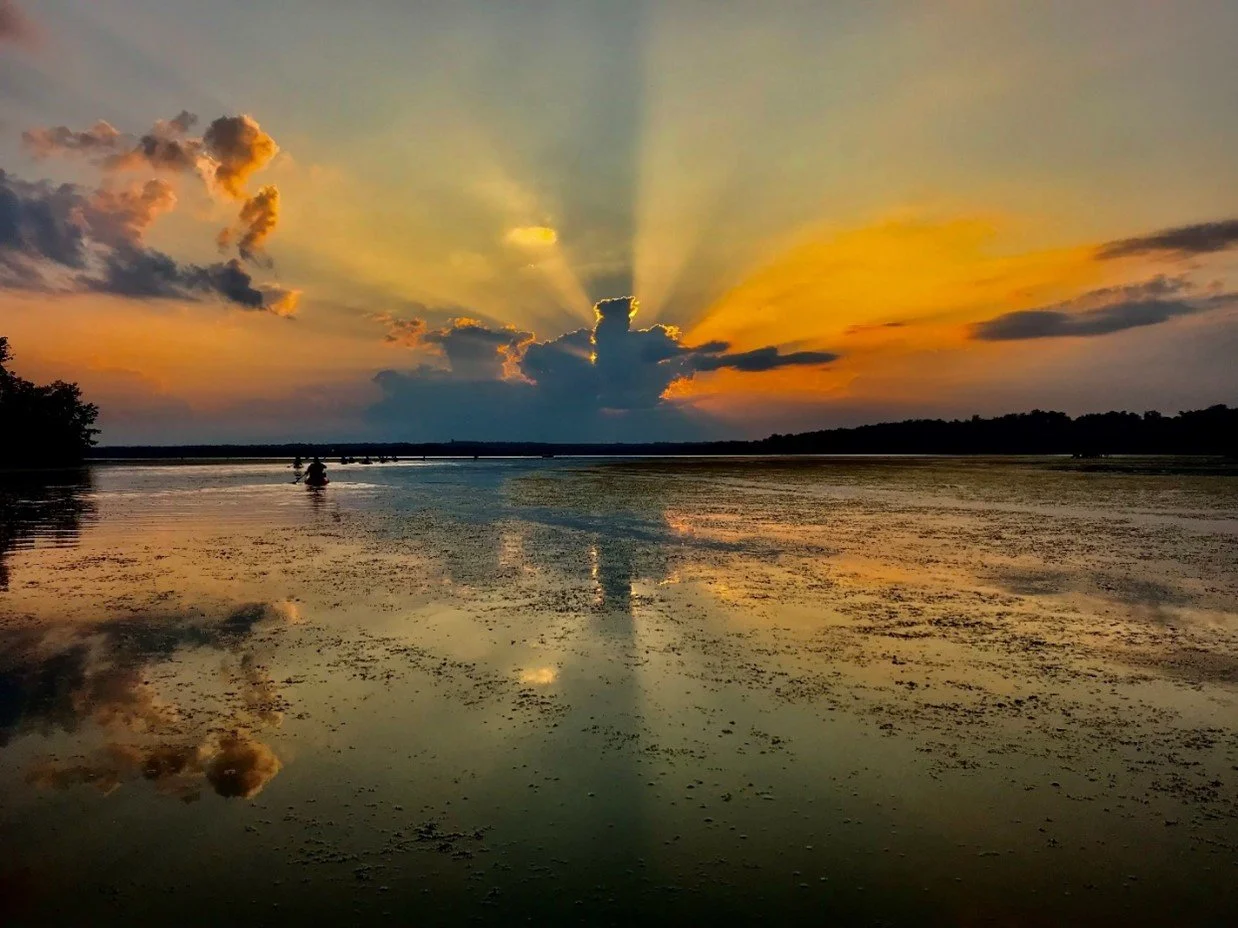Photo: Mouth of Kane’s Creek, Mason Neck State Park Photo Archive
Tom Blackburn, NVBA Director
As the sun slowly sank into Belmont Bay, a full moon rose behind us, lighting our way down Kane’s Creek. We paddled our kayaks back to the launch site with only the splash of our paddles to disturb the quiet of the evening. I was at Mason Neck State Park, a hidden gem just 15 minutes from I-95 near Lorton, Virginia. The park offers twenty guided morning and evening kayak trips from May through September, and kayaks and canoes are available for rent seven days a week.
Kayaking into crepuscular rays, Jerry Nissley
Mason Neck State Park has other “quiet enjoyment” opportunities as well. The park’s varied habitats provide food, shelter and nesting areas for more than 200 species of birds. Bald Eagles nest at several sites in the park as well as at the adjacent Elizabeth Hartwell Mason Neck National Wildlife Refuge, the first NWR in the country established to protect the nesting area of Bald Eagles. The park’s now-retired manager used to guarantee to visitors that he could show them an eagle within 20 minutes. Ospreys nest on a platform near the Visitor Center, and the other day both adults put on an aerial display, drawing a crowd of photographers as they swooped and soared in 20 mph winds. The Woodmarsh Trail, just outside the park in the wildlife refuge, leads to the Great Marsh, where as many as 300 Tundra Swans can be seen from November through mid-March.
Kris Gulden, Accessibility Advisor for Mason Neck State Park, at the end of the Marsh View Trail. Photo: Pam Cressey
Mason Neck State Park offers eight hiking trails. The most popular is the Bay View Trail, which traverses three distinct habitats – shoreline, beaver-created wetland, and forest – in just one mile. On the Meadow View Trail, in contrast, you will likely see no one else as you walk through forest to an expanse of grassland. Several of the park’s trails are wheelchair-accessible, and the park also has an electric all-terrain wheelchair that visitors can reserve without charge.
The park is a testament to the importance of conservation activism in preserving our natural areas. In the 1960s developers had big plans for “the Neck,” a peninsula bounded by Pohick Bay, Gunston Cove, Belmont Bay and the Potomac River. They envisioned a regional airport, thousands of homes and a bridge across the river as part of an Outer Beltway, among other projects. Elizabeth Hartwell, a local resident, campaigned against the development because it would disturb a nesting area for then-critically endangered Bald Eagles. Hartwell’s efforts, along with those of other conservationists, prevailed. Instead of massive development Mason Neck now boasts the state park, the wildlife refuge, Pohick Bay Regional Park and golf course, the Bureau of Land Management’s Meadowood Special Recreation Area, Gunston Hall, and Mason Neck West County Park. Two-thirds of Mason Neck – 6,000 acres – is now protected parkland.
You can learn more about Mason Neck State Park, including the park’s accessible features, from the Friends of Mason Neck State Park’s website.



